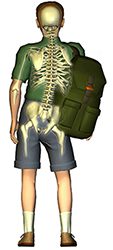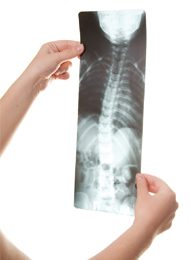The increasing availability to computers, phones, tablets and televisions is changing the way children are growing up and this can be clearly seen in their increasing prevalence of poor posture, muscle weakness and back pain.

Your physiotherapist can help by assessing your child’s posture. This is done by visual assessment using a posture grid and specific functional tests and may in some cases recommend additional tests such as X-rays.
If an abnormal posture is detected, a specific rehabilitation program will be worked out. The biggest part of the rehabilitation process remains exercise and education.
Scoliosis, kyphosis and lordosis

Scoliosis
Sideways curvature of the spine when viewed from behind. This happens when the muscles on, for example, the left are stronger than the right causing the spine to be pulled away from the straight line. It usually is followed by an opposite cure higher or lower as a compensation.
Kyphosis
Also called a hunchback posture as the upper back becomes excessively round. The most common cause is shortening of the chest muscles and weakness of the upper back muscles.
Lordosis
Called the hollow back posture. This appears as an excessive hollow lower back and is caused by strong lower back and hip muscles together with weakness of the stomach muscles and hamstrings.


